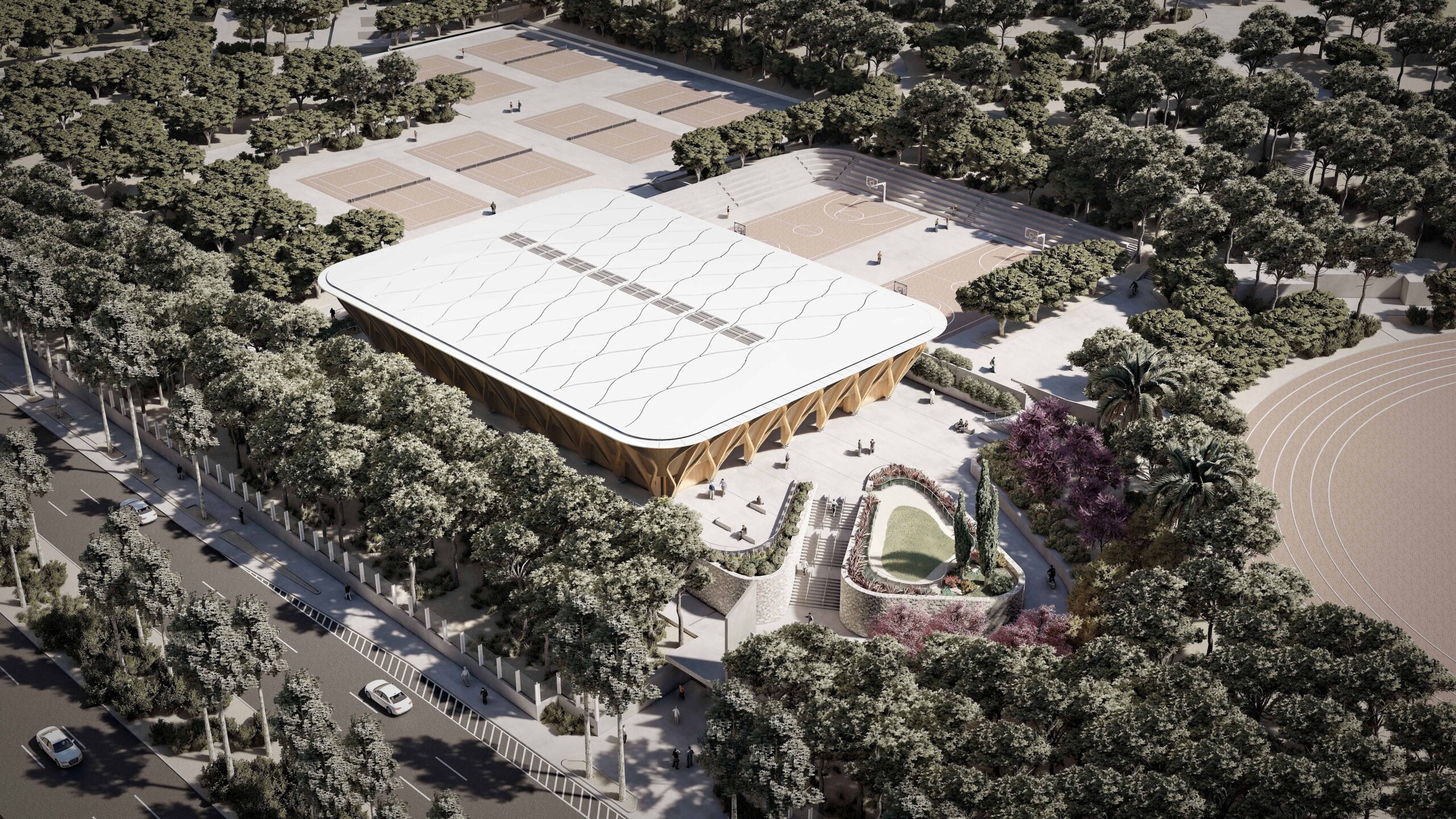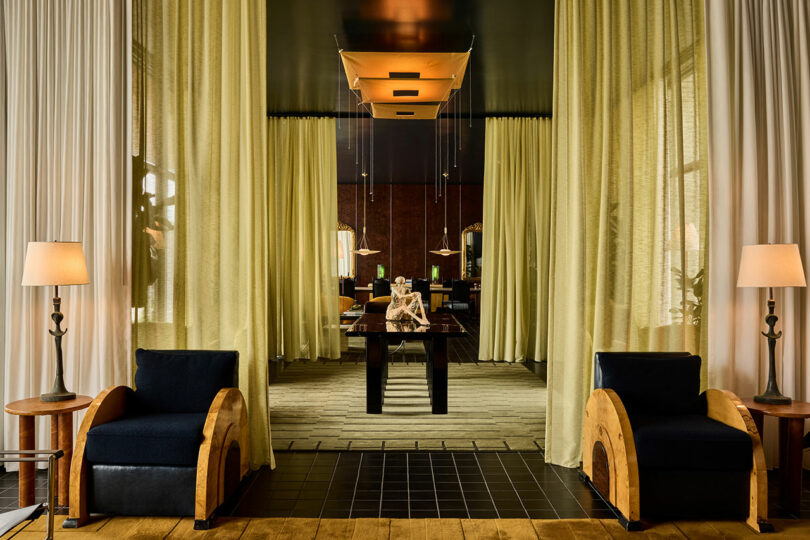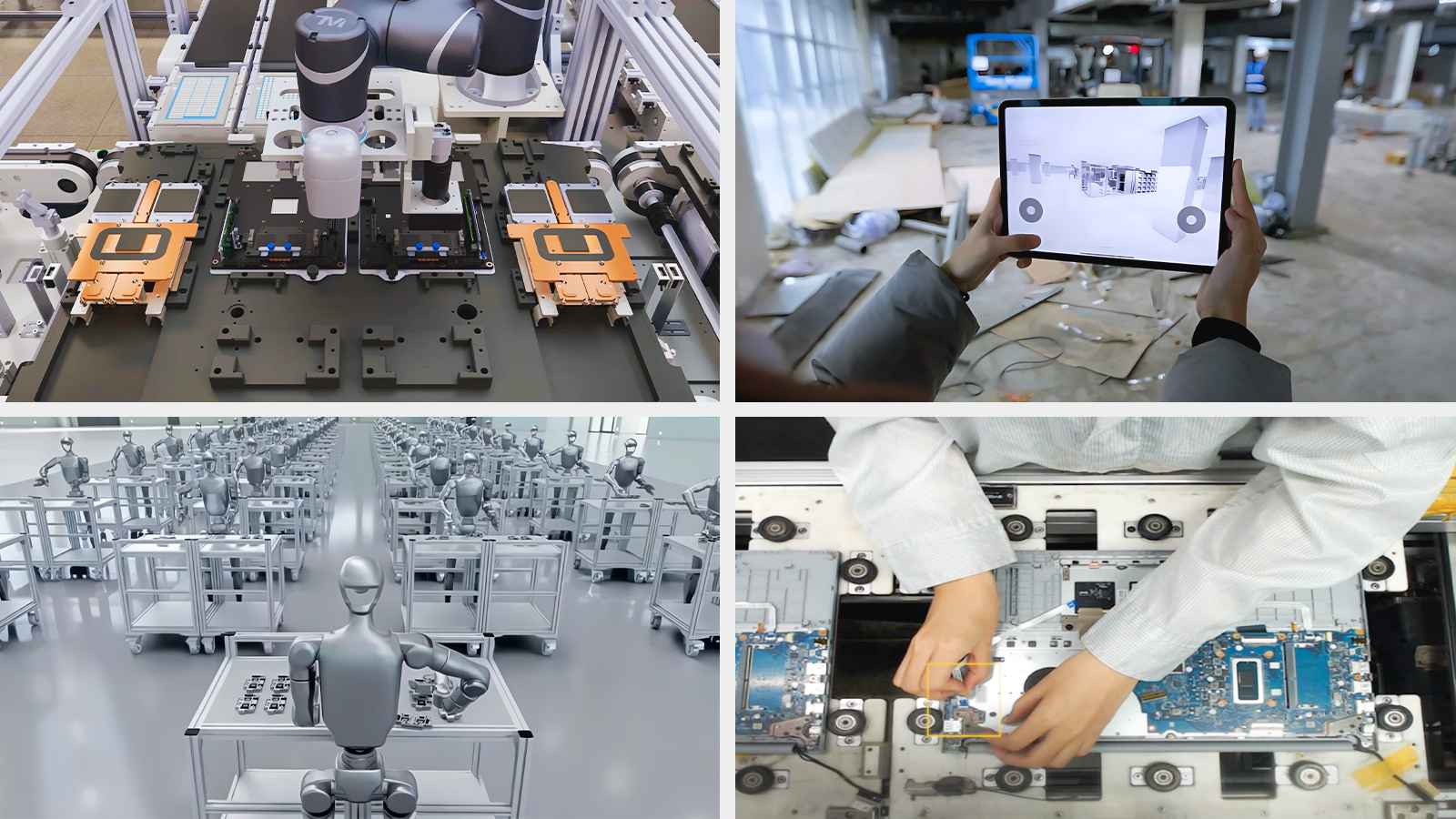An excerpt from a new book by Sérgio Ferro, published by MACK Books, showcases the architect’s moment of disenchantment
Last year, MACK Books published Architecture from Below, which anthologized writings by the French Brazilian architect, theorist, and painter Sérgio Ferro.Now, MACK follows with Design and the Building Site and Complementary Essays, the second in the trilogy of books dedicated to Ferro’s scholarship. The following excerpt of the author’s 2023 preface to the English edition, which preserves its British phrasing, captures Ferro’s realization about the working conditions of construction sites in Brasília. The sentiment is likely relatable even today for young architects as they discover how drawings become buildings. Design and the Building Site and Complementary Essays will be released on May 22.
If I remember correctly, it was in 1958 or 1959, when Rodrigo and I were second- or third year architecture students at FAUUSP, that my father, the real estate developer Armando Simone Pereira, commissioned us to design two large office buildings and eleven shops in Brasilia, which was then under construction. Of course, we were not adequately prepared for such an undertaking. Fortunately, Oscar Niemeyer and his team, who were responsible for overseeing the construction of the capital, had drawn up a detailed document determining the essential characteristics of all the private sector buildings. We followed these prescriptions to the letter, which saved us from disaster.
Nowadays, it is hard to imagine the degree to which the construction of Brasilia inspired enthusiasm and professional pride in the country’s architects. And in the national imagination, the city’s establishment in the supposedly unpopulated hinterland evoked a re-founding of Brazil. Up until that point, the occupation of our immense territory had been reduced to a collection of arborescent communication routes, generally converging upon some river, following it up to the Atlantic Ocean. Through its ports, agricultural or extractive commodities produced by enslaved peoples or their substitutes passed towards the metropolises; goods were exchanged in the metropolises for more elaborate products, which took the opposite route. Our national identity was summed up in a few symbols, such as the anthem or the flag, and this scattering of paths pointing overseas. Brasilia would radically change this situation, or so we believed. It would create a central hub where the internal communication routes could converge, linking together hithertoseparate junctions, stimulating trade and economic progress in the country’s interior. It was as if, for the first time, we were taking care of ourselves. At the nucleus of this centripetal movement, architecture would embody the renaissance. And at the naval of the nucleus, the symbolic mandala of this utopia: the cathedral.
Rodrigo and I got caught up in the euphoria. And perhaps more so than our colleagues, because we were taking part in the adventure with ‘our’ designs. The reality was very different — but we did not know that yet.
At that time, architects in Brazil were responsible for verifying that the construction was in line with the design. We had already monitored some of our first building sites. But the construction company in charge of them, Osmar Souza e Silva’s CENPLA, specialized in the building sites of modernist architects from the so-called Escola Paulista led by Vilanova Artigas. Osmar was very attentive to his clients and his workers, who formed a supportive and helpful team. He was even more careful with us, because he knew how inexperienced we were. I believe that the CENPLA was particularly important in São Paulo modernism: with its congeniality, it facilitated experimentation, but for the same reason, it deceived novices like us about the reality of other building sites.
Consequently, Rodrigo and I travelled to Brasilia several times to check that the constructions followed ‘our’ designs and to resolve any issues. From the very first trip, our little bubble burst. Our building sites, like all the others in the future capital, bore no relation to Osmar’s. They were more like a branch of hell. A huge, muddy wasteland, in which a few cranes, pile drivers, tractors, and excavators dotted the mound of scaffolding occupied by thousands of skinny, seemingly exhausted wretches, who were nevertheless driven on by the shouts of master builders and foremen, in turn pressured by the imminence of the fateful inauguration date. Surrounding or huddled underneath the marquees of buildings under construction, entire families, equally skeletal and ragged, were waiting for some accident or death to open up a vacancy. In contact only with the master builders, and under close surveillance so we would not speak to the workers, we were not allowed to see what comrades who had worked on these sites later told us in prison: suicide abounded; escape was known to be futile in the unpopulated surroundings with no viable roads; fatal accidents were often caused by weakness due to chronic diarrhoea, brought on by rotten food that came from far away; outright theft took place in the calculation of wages and expenses in the contractor’s grocery store; camps were surrounded by law enforcement.
I repeat this anecdote yet again not to invoke the benevolence of potential readers, but rather to point out the conditions that, in my opinion, allowed two studentsstill in their professional infancy to quickly adopt positions that were contrary to the usual stance of architects. As the project was more Oscar Niemeyer’s than it was our own, we did not have the same emotional attachment that is understandably engendered between real authors and their designs. We had not yet been imbued with the charm and aura of the métier. And the only building sites we had visited thus far, Osmar’s, were incomparable to those we discovered in Brasilia. In short, our youthfulness and unpreparedness up against an unbearable situation made us react almost immediately to the profession’s satisfied doxa.
Unprepared and young perhaps, but already with Marx by our side. Rodrigo and I joined the student cell of the Brazilian Communist Party during our first year at university. In itself, this did not help us much: the Party’s Marxism, revised in the interests of the USSR, was pitiful. Even high-level leaders rarely went beyond the first chapter of Capital. But at the end of the 1950s, the effervescence of the years to come was already nascent: this extraordinary revivalthe rediscovery of Marxism and the great dialectical texts and traditions in the 1960s: an excitement that identifies a forgotten or repressed moment of the past as the new and subversive, and learns the dialectical grammar of a Hegel or an Adorno, a Marx or a Lukács, like a foreign language that has resources unavailable in our own.
And what is more: the Chinese and Cuban revolutions, the war in Vietnam, guerrilla warfare of all kinds, national liberation movements, and a rare libertarian disposition in contemporary history, totally averse to fanaticism and respect for ideological apparatuses ofstate or institution. Going against the grain was almost the norm. We were of course no more than contemporaries of our time. We were soon able to position ourselves from chapters 13, 14, and 15 of Capital, but only because we could constantly cross-reference Marx with our observations from well-contrasted building sites and do our own experimenting. As soon as we identified construction as manufacture, for example, thanks to the willingness and even encouragement of two friends and clients, Boris Fausto and Bernardo Issler, I was able to test both types of manufacture — organic and heterogeneous — on similar-sized projects taking place simultaneously, in order to find out which would be most convenient for the situation in Brazil, particularly in São Paulo. Despite the scientific shortcomings of these tests, they sufficed for us to select organic manufacture. Arquitetura Nova had defined its line of practice, studies, and research.
There were other sources that were central to our theory and practice. Flávio Império was one of the founders of the Teatro de Arena, undoubtedly the vanguard of popular, militant theatre in Brazil. He won practically every set design award. He brought us his marvelous findings in spatial condensation and malleability, and in the creative diversion of techniques and material—appropriate devices for an underdeveloped country. This is what helped us pave the way to reformulating the reigning design paradigms.
We had to do what Flávio had done in the theatre: thoroughly rethink how to be an architect. Upend the perspective. The way we were taught was to start from a desired result; then others would take care of getting there, no matter how. We, on the other hand, set out to go down to the building site and accompany those carrying out the labor itself, those who actually build, the formally subsumed workers in manufacture who are increasingly deprived of the knowledge and know-how presupposed by this kind of subsumption. We should have been fostering the reconstitution of this knowledge and know-how—not so as to fulfil this assumption, but in order to reinvigorate the other side of this assumption according to Marx: the historical rebellion of the manufacture worker, especially the construction worker. We had to rekindle the demand that fueled this rebellion: total self-determination, and not just that of the manual operation as such. Our aim was above all political and ethical. Aesthetics only mattered by way of what it included—ethics. Instead of estética, we wrote est ética. We wanted to make building sites into nests for the return of revolutionary syndicalism, which we ourselves had yet to discover.
Sérgio Ferro, born in Brazil in 1938, studied architecture at FAUUSP, São Paulo. In the 1960s, he joined the Brazilian communist party and started, along with Rodrigo Lefevre and Flávio Império, the collective known as Arquitetura Nova. After being arrested by the military dictatorship that took power in Brazil in 1964, he moved to France as an exile. As a painter and a professor at the École Nationale Supérieure d’Architecture de Grenoble, where he founded the Dessin/Chantier laboratory, he engaged in extensive research which resulted in several publications, exhibitions, and awards in Brazil and in France, including the title of Chevalier des Arts et des Lettres in 1992. Following his retirement from teaching, Ferro continues to research, write, and paint.
#excerpt #new #book #sérgio #ferro
An excerpt from a new book by Sérgio Ferro, published by MACK Books, showcases the architect’s moment of disenchantment
Last year, MACK Books published Architecture from Below, which anthologized writings by the French Brazilian architect, theorist, and painter Sérgio Ferro.Now, MACK follows with Design and the Building Site and Complementary Essays, the second in the trilogy of books dedicated to Ferro’s scholarship. The following excerpt of the author’s 2023 preface to the English edition, which preserves its British phrasing, captures Ferro’s realization about the working conditions of construction sites in Brasília. The sentiment is likely relatable even today for young architects as they discover how drawings become buildings. Design and the Building Site and Complementary Essays will be released on May 22.
If I remember correctly, it was in 1958 or 1959, when Rodrigo and I were second- or third year architecture students at FAUUSP, that my father, the real estate developer Armando Simone Pereira, commissioned us to design two large office buildings and eleven shops in Brasilia, which was then under construction. Of course, we were not adequately prepared for such an undertaking. Fortunately, Oscar Niemeyer and his team, who were responsible for overseeing the construction of the capital, had drawn up a detailed document determining the essential characteristics of all the private sector buildings. We followed these prescriptions to the letter, which saved us from disaster.
Nowadays, it is hard to imagine the degree to which the construction of Brasilia inspired enthusiasm and professional pride in the country’s architects. And in the national imagination, the city’s establishment in the supposedly unpopulated hinterland evoked a re-founding of Brazil. Up until that point, the occupation of our immense territory had been reduced to a collection of arborescent communication routes, generally converging upon some river, following it up to the Atlantic Ocean. Through its ports, agricultural or extractive commodities produced by enslaved peoples or their substitutes passed towards the metropolises; goods were exchanged in the metropolises for more elaborate products, which took the opposite route. Our national identity was summed up in a few symbols, such as the anthem or the flag, and this scattering of paths pointing overseas. Brasilia would radically change this situation, or so we believed. It would create a central hub where the internal communication routes could converge, linking together hithertoseparate junctions, stimulating trade and economic progress in the country’s interior. It was as if, for the first time, we were taking care of ourselves. At the nucleus of this centripetal movement, architecture would embody the renaissance. And at the naval of the nucleus, the symbolic mandala of this utopia: the cathedral.
Rodrigo and I got caught up in the euphoria. And perhaps more so than our colleagues, because we were taking part in the adventure with ‘our’ designs. The reality was very different — but we did not know that yet.
At that time, architects in Brazil were responsible for verifying that the construction was in line with the design. We had already monitored some of our first building sites. But the construction company in charge of them, Osmar Souza e Silva’s CENPLA, specialized in the building sites of modernist architects from the so-called Escola Paulista led by Vilanova Artigas. Osmar was very attentive to his clients and his workers, who formed a supportive and helpful team. He was even more careful with us, because he knew how inexperienced we were. I believe that the CENPLA was particularly important in São Paulo modernism: with its congeniality, it facilitated experimentation, but for the same reason, it deceived novices like us about the reality of other building sites.
Consequently, Rodrigo and I travelled to Brasilia several times to check that the constructions followed ‘our’ designs and to resolve any issues. From the very first trip, our little bubble burst. Our building sites, like all the others in the future capital, bore no relation to Osmar’s. They were more like a branch of hell. A huge, muddy wasteland, in which a few cranes, pile drivers, tractors, and excavators dotted the mound of scaffolding occupied by thousands of skinny, seemingly exhausted wretches, who were nevertheless driven on by the shouts of master builders and foremen, in turn pressured by the imminence of the fateful inauguration date. Surrounding or huddled underneath the marquees of buildings under construction, entire families, equally skeletal and ragged, were waiting for some accident or death to open up a vacancy. In contact only with the master builders, and under close surveillance so we would not speak to the workers, we were not allowed to see what comrades who had worked on these sites later told us in prison: suicide abounded; escape was known to be futile in the unpopulated surroundings with no viable roads; fatal accidents were often caused by weakness due to chronic diarrhoea, brought on by rotten food that came from far away; outright theft took place in the calculation of wages and expenses in the contractor’s grocery store; camps were surrounded by law enforcement.
I repeat this anecdote yet again not to invoke the benevolence of potential readers, but rather to point out the conditions that, in my opinion, allowed two studentsstill in their professional infancy to quickly adopt positions that were contrary to the usual stance of architects. As the project was more Oscar Niemeyer’s than it was our own, we did not have the same emotional attachment that is understandably engendered between real authors and their designs. We had not yet been imbued with the charm and aura of the métier. And the only building sites we had visited thus far, Osmar’s, were incomparable to those we discovered in Brasilia. In short, our youthfulness and unpreparedness up against an unbearable situation made us react almost immediately to the profession’s satisfied doxa.
Unprepared and young perhaps, but already with Marx by our side. Rodrigo and I joined the student cell of the Brazilian Communist Party during our first year at university. In itself, this did not help us much: the Party’s Marxism, revised in the interests of the USSR, was pitiful. Even high-level leaders rarely went beyond the first chapter of Capital. But at the end of the 1950s, the effervescence of the years to come was already nascent: this extraordinary revivalthe rediscovery of Marxism and the great dialectical texts and traditions in the 1960s: an excitement that identifies a forgotten or repressed moment of the past as the new and subversive, and learns the dialectical grammar of a Hegel or an Adorno, a Marx or a Lukács, like a foreign language that has resources unavailable in our own.
And what is more: the Chinese and Cuban revolutions, the war in Vietnam, guerrilla warfare of all kinds, national liberation movements, and a rare libertarian disposition in contemporary history, totally averse to fanaticism and respect for ideological apparatuses ofstate or institution. Going against the grain was almost the norm. We were of course no more than contemporaries of our time. We were soon able to position ourselves from chapters 13, 14, and 15 of Capital, but only because we could constantly cross-reference Marx with our observations from well-contrasted building sites and do our own experimenting. As soon as we identified construction as manufacture, for example, thanks to the willingness and even encouragement of two friends and clients, Boris Fausto and Bernardo Issler, I was able to test both types of manufacture — organic and heterogeneous — on similar-sized projects taking place simultaneously, in order to find out which would be most convenient for the situation in Brazil, particularly in São Paulo. Despite the scientific shortcomings of these tests, they sufficed for us to select organic manufacture. Arquitetura Nova had defined its line of practice, studies, and research.
There were other sources that were central to our theory and practice. Flávio Império was one of the founders of the Teatro de Arena, undoubtedly the vanguard of popular, militant theatre in Brazil. He won practically every set design award. He brought us his marvelous findings in spatial condensation and malleability, and in the creative diversion of techniques and material—appropriate devices for an underdeveloped country. This is what helped us pave the way to reformulating the reigning design paradigms.
We had to do what Flávio had done in the theatre: thoroughly rethink how to be an architect. Upend the perspective. The way we were taught was to start from a desired result; then others would take care of getting there, no matter how. We, on the other hand, set out to go down to the building site and accompany those carrying out the labor itself, those who actually build, the formally subsumed workers in manufacture who are increasingly deprived of the knowledge and know-how presupposed by this kind of subsumption. We should have been fostering the reconstitution of this knowledge and know-how—not so as to fulfil this assumption, but in order to reinvigorate the other side of this assumption according to Marx: the historical rebellion of the manufacture worker, especially the construction worker. We had to rekindle the demand that fueled this rebellion: total self-determination, and not just that of the manual operation as such. Our aim was above all political and ethical. Aesthetics only mattered by way of what it included—ethics. Instead of estética, we wrote est ética. We wanted to make building sites into nests for the return of revolutionary syndicalism, which we ourselves had yet to discover.
Sérgio Ferro, born in Brazil in 1938, studied architecture at FAUUSP, São Paulo. In the 1960s, he joined the Brazilian communist party and started, along with Rodrigo Lefevre and Flávio Império, the collective known as Arquitetura Nova. After being arrested by the military dictatorship that took power in Brazil in 1964, he moved to France as an exile. As a painter and a professor at the École Nationale Supérieure d’Architecture de Grenoble, where he founded the Dessin/Chantier laboratory, he engaged in extensive research which resulted in several publications, exhibitions, and awards in Brazil and in France, including the title of Chevalier des Arts et des Lettres in 1992. Following his retirement from teaching, Ferro continues to research, write, and paint.
#excerpt #new #book #sérgio #ferro
0 Comentários
0 Compartilhamentos
0 Anterior















